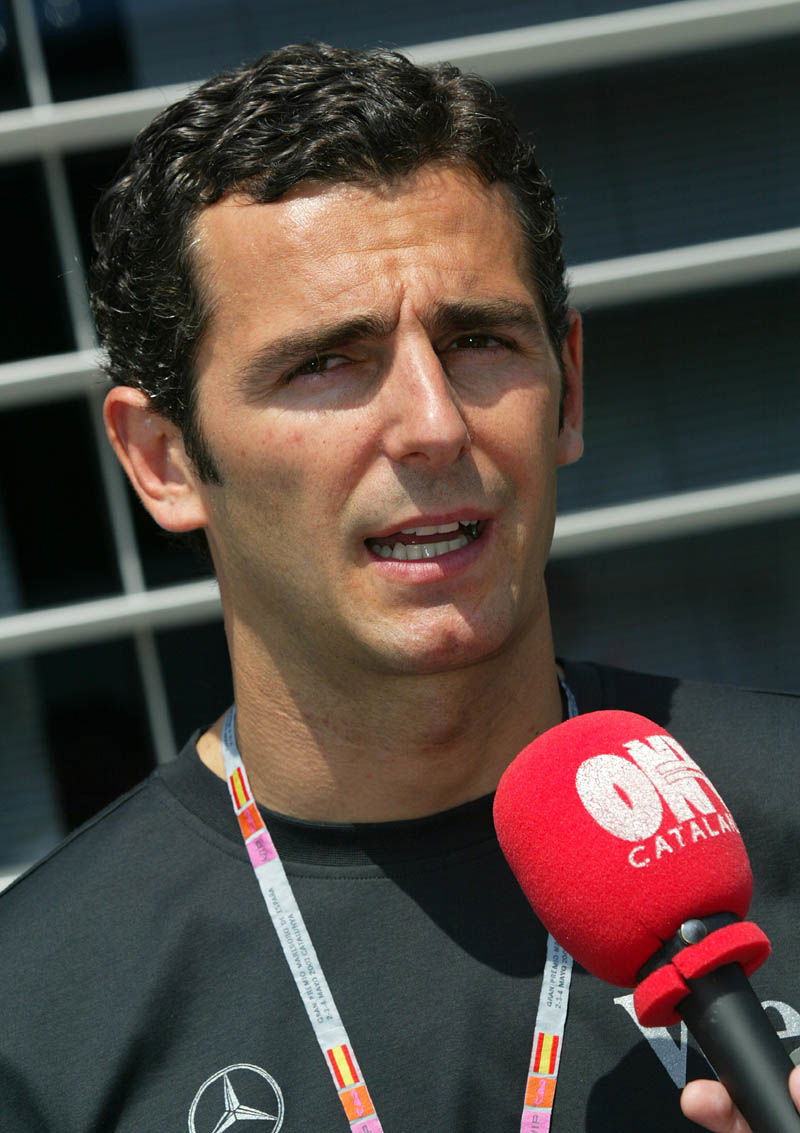Eurofighter versus Schumi's F2003-GA: result 2-1.
It was 9.30 am yesterday [Thursday] when the Piaggio P180, the Piaggio plane that bears the Prancing Horse symbol, touched down at Baccarini airport in Grosseto. On board was Michael Schumacher, ready to face a historical challenge in the form of a duel between his F2003-GA and a Eurofighter Typhoon.
Under broody skies, Schumacher climbed aboard the F2003-GA for the shootout with the jewel in the airforce crown.

It was 9.30 am yesterday [Thursday] when the Piaggio P180, the Piaggio plane that bears the Prancing Horse symbol, touched down at Baccarini airport in Grosseto. On board was Michael Schumacher, ready to face a historical challenge in the form of a duel between his F2003-GA and a Eurofighter Typhoon.
Under broody skies, Schumacher climbed aboard the F2003-GA for the shootout with the jewel in the airforce crown.
Three races were planned: the first, over a 600-metre distance that favoured the swift acceleration of the single-seater, saw the F2003-GA break the tape first, touching 294km/h, in 9"4 versus 9"6 of the jet.
The second duel was over 1200 metres in which the Eurofighter showed the single-seater a clean pair of heels and sped away with the win in 14"2 versus 16"7. The F2003-GA reached 308 km/h.
The third, decisive, challenge was fought out over 900 metres and was a tight affair. The Eurofighter just scraped home, two tenths ahead of the F2003-GA (13 seconds versus 13.2). On the wet surface that took away some of the grip from the tyres, Schumacher reached 305km/h.
"The best race was the first," joked Michael. "If it weren't for the rain we would have had more grip, but, in any case, the result was not important in this race! It was fun watching the plane take off from where I was sitting. From a technical point of view, the start was like a normal Grand Prix; if you take into account the difference in power between an aeroplane and the single-seater, these results could only have been expected. But it was a great event and a unique challenge. I hope the fans had as much fun as we all did!"
Pierro Ferrari awarded the winner his prize: "It was an exciting race and one I enjoyed very much as I love the aeronautical world," reflected the Ferrari vice-president.
He went on: "Apart from the result, the important aspect of the day is that we have demonstrated how Italy is able to produce winning technology in both fields. Today was the demonstration of the highest technology in two worlds, that of four wheels where Ferrari leads the pack, and the aeronautical sphere, in which Italy is at a very high level."
Filippo Berselli, Defence Under-Secretary, also thought the Grosseto show had been a great day out: "I would say that this is a day for Italian industry and for Italy. The new European fighter jet is an extraordinary machine, created with the intelligence and imagination of Italian industry, who, thanks also to Ferrari, have had a superb showcase in today."
After the demanding day, rest is in order for Schumacher: "For now I will relax and carry on with the training by karting," concluded Michael to journalists who had enquired about his off-season plans. "I aim to be in shape for next year and in the meantime I will enjoy Christmas with my family."
As planned, the event went on with a re-run of the 1931 race, this first ever between a plane and a car. In place of Nuvolari at the wheel of the Alfa Romeo 8C 2300 was Massimiliano Stancari and commanding the Tiger Moth (a substitute for the unavailable Caproni) was Stefano Rusconi. The duel was fought over four consecutive laps and saw the car leading for the first three laps only for the plane to sneak the win at the last with a one second advantage. The Alfa reached a top speed of 185km/h, lower in the curves, while the plane maintained a constant average speed of 140km/h.
The first course over and gazing from the track to the sky, the massed ranks could only look on open-mouthed as the spectacular Eurofighter piloted by Maurizio Cheli flexed its muscles.
